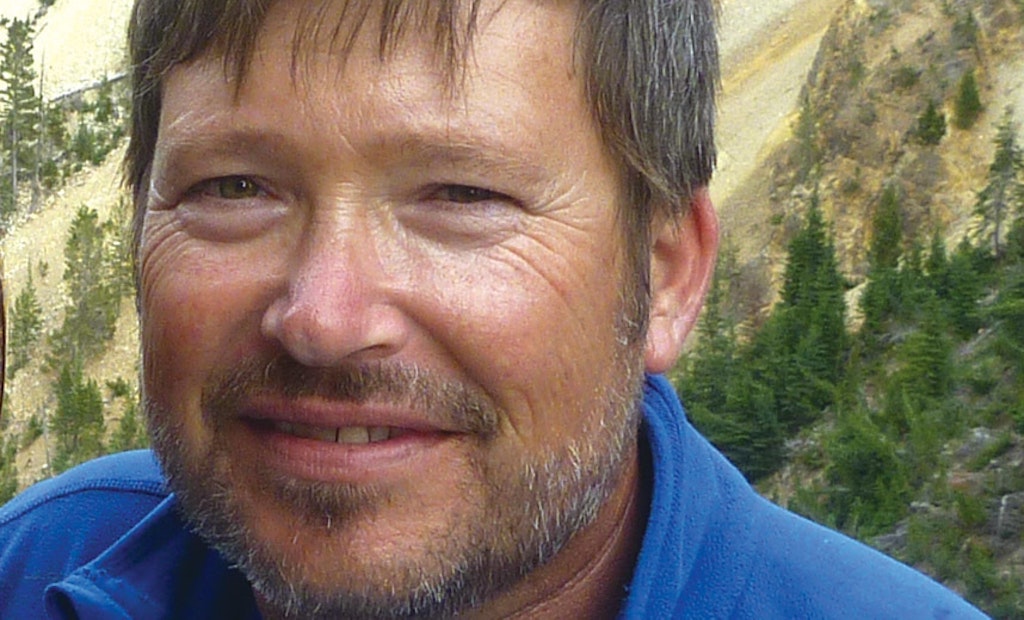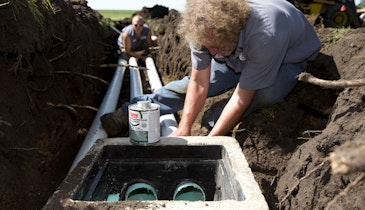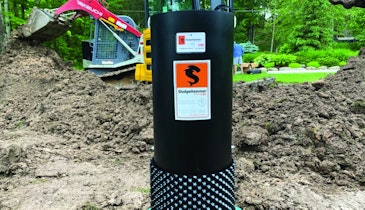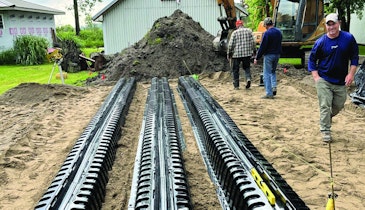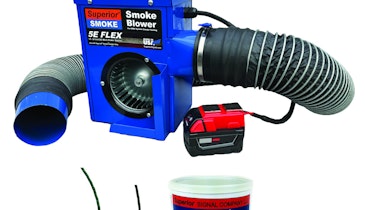Interested in Disposal?
Get Disposal articles, news and videos right in your inbox! Sign up now.
Disposal + Get AlertsJust south of Yellowstone and Grand Teton national parks in Wyoming lies Jackson Hole, a high mountain valley about 50 miles long and 10 miles wide. The largest town, Jackson, has a population of 10,000 but 2.5 million visitors arrive yearly to enjoy spectacular scenery and recreational sports. It’s estimated there are 2,500 to 3,000 septic systems in the valley and, despite outward appearances of a pristine natural environment, studies indicate that lack of proper maintenance and management of these systems is a contributing factor to pollution of local waterways.
In 2013, when no action was taken after water reports from the U.S. Geological Survey indicated pollution problems, a group of frustrated citizens formed Friends of Fish Creek to promote the health of the creek. Accomplishments included mapping all the septic systems and sewer infrastructure and, for a limited time, partnering with the Teton Conservation District to offer a cost-share septic pumping program utilized by about 300 homeowners.
As pollution problems in other areas of the valley came to light, it became apparent the larger issue was one of wastewater management in the entire valley. In response, the group reformed as Protect Our Waters Jackson Hole to promote programs that protect and restore the valley’s surface and ground waters. The organization currently has 600 supporters and a board of 13. Executive director Dan Leemon, a watershed management specialist, spoke to Pumper about the group’s mission and accomplishments.
Pumper: How are septic systems causing problems?
Leemon: Septic permitting hasn’t changed in decades. There are no maintenance or inspection requirements. And there’s been a real lack of education about how to properly maintain a system. The average age of a system here is 29 years. We found 282 unpermitted systems that are older than the permitting system which started in 1974. And the treatment infrastructure hasn’t changed. The main plant in Jackson, which is a lagoon system, is almost 40 years old, as are two other treatment plants — although well cared for.
Pumper: Has the problem been getting worse?
Leemon: The county has been growing at an unbelievable rate. And during COVID, growth has been unprecedented. With the advent of remote work, people have been moving from the cities into rural mountain areas, especially around resort communities. With only 3% of the valley being private land, the easiest places to develop have already been developed, so now we’re starting to move out into the more rural areas. The hands-off approach the county has taken on septic system management might have been okay in the 1970s and 1980s when the population was a lot smaller.
Pumper: What were some of your initial efforts?
Leemon: When we researched small wastewater facility management in other resort communities, we noticed one of the things we were missing was a wastewater management plan, as infrastructure gets older and the population expands. We’ve really focused on that. We raised $250,000 to contribute to the effort and are now advocating for it at the county level.
And then we’re just trying to raise awareness around these issues. Five years ago, there was literally no one talking about septic systems or aging infrastructure. People are paying much more attention now. Two days before Thanksgiving last year 52 people showed up to a meeting on septic systems. I think that’s a victory. We now have an active and involved public, which is really nice to see.
Pumper: What other successes have you had?
Leemon: The county just released some new small wastewater facility regulations. New septic systems are now going to get an operations and maintenance manual. We advocated to have the regulations apply to all systems, but we weren’t successful in that effort.
And the county just signed a contract with a consultant, TriHydro, to do a water quality master plan. They’re Wyoming-based but also a national company, so they bring a lot of that experience from across the country. What we’ve asked them to do is a major undertaking. You can just imagine the data collection around something like this. We’re thrilled to have them onboard.
Pumper: What is your current focus?
Leemon: We really wanted to see some kind of inspection and maintenance requirement included in the new regulations. We didn’t get that, but the commissioners have asked staff to explore all the logistics around doing that. As an advocacy group we’re pouring through a lot of information and picking out the parts we think would build the best program. We’ve used the voluntary U.S. Environmental Protection Agency Management of Onsite and Clustered Wastewater Treatment Systems as our guide. There are different management options and one thing they stress is picking and choosing the parts that best fit your area. We have a workshop coming up with the commissioners to discuss all these options.
We believe any requirement for maintenance and inspection should go hand in hand with some kind of financial aid program. A lot of times, when you look at older systems, you end up targeting the people that can least afford to replace or repair them. We’re exploring all the options for cost-share — and there are quite a few out there, federal, state and local. For example, the U.S. Department of Agriculture Rural Water System Grant is available to nonprofits where we would actually distribute grant funds to homeowners. There’s a similar grant program offered by the EPA that the county could apply for.
Pumper: What is your longer-term focus?
Leemon: For the next two years, we have a specific scope of work — and there’s a lot of work to be done — to get to the point where we have that comprehensive plan. At the end of the day, we are going to have a wastewater plan. When we think about changes in the long term — be it new plants, centralized systems, clustered systems — we know we’ll have a plan in place and oftentimes that’s a requirement to get federal funding on projects like these.
Teton County sits at the headwaters of the Snake River. We feel a real responsibility to protect the water quality of the river because it is so important to the greater Yellowstone ecosystem.
Pumper: What advice do you have for other fast-growing resort communities?
Leemon: One thing we stress is just being proactive on these things. I can’t say enough about how it pays off. It’s much more expensive to remediate problems after you discover them than to prevent them before they happen. That’s a difficult task but I feel like we’re moving the bar on that.
